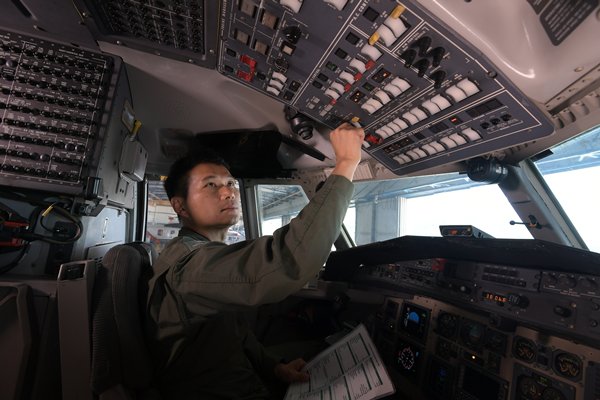Second wind for retired plane
Most retired aircraft end up on the scrapheap. But the Government Flying Service has bequeathed one of its old workhorses to the community, to give the public an accessible keepsake of Hong Kong's aviation history.
The Jetstream 41 fixed-wing plane was part of the GFS fleet for 17 years before it was retired in 2016.
It was used for search and rescue missions, medical evacuations, law enforcement and aerial surveying.
Recently, it was given a permanent resting place in Kai Tak Runway Park to play a new role - educating the public.
Mechanical marvel
The aircraft was like a second office for Senior Pilot Eric Leung.
"I spent most of my time in my office and in the cockpit of the Jetstream. So it's played a very significant part in my career.
"Over the last 17 years, I think the aircraft has served us very well. With her good performance, she gave us confidence being the driver of the plane."
In 1998, GFS bought two Jetstream 41s from British Aerospace Regional Aircraft .
Captain Leung was on location on delivery day.
"The first impression was she was big in terms of size compared to our previous aircraft which was much smaller. And I found her colour scheme, which is white and orange, it's very attractive. So it gave me a very smart impression. So I couldn't wait to start training on this aircraft back then."
GFS Chief Aircraft Engineer Johnny Yee recalled the aircraft were fitted with top of the line technology when they were received in Hong Kong 20 years ago.
"They had a very good search radar, the infrared FIR system, satellite antenna, and also we could install a large format mechanical camera.
"At that time, I found these two aircraft's technology, it's almost the most advanced technology."
New possibilities
In 2009, one of the planes was fitted with a system to collect weather data for the Hong Kong Observatory.
The aircraft was deployed for its first data collection mission in a typhoon as Tropical Storm Haima was heading towards the city in June 2011.
Captain Leung was on board that day.
"It was so calm that it didn't look like we were going into a typhoon. But the next 10 minutes was very different. We started feeling a vibration. We could hear the noise of the raindrops hitting the windscreen of the aircraft, which was very noisy.
"Also the vibration was not just upward and downward. It was almost every direction. It lasted for about 10 minutes.
"Then suddenly we went into a blue sky area where it was so calm that in front of us there was no indication of the wind speed, which means, very likely, that we were in the eye of the typhoon. Normally we learned this from a book, but at that moment we experienced it, which was quite exciting."
With its strong stability, the aircraft encountered minimal technical problems during its service.
However, the manufacturer eventually stopped producing the plane and its components, sending it into retirement.
Mr Yee said it would be difficult for GFS to sell the plane and scrapping it would be a waste.
"This aircraft, it is heavily modified for multi-mission purposes. So if we really want to reconfigure it back as a passenger aircraft, it might cost a lot.
"I don't think there are any customers who would like to buy this aircraft.
"If we can put this on permanent display in Kai Tak Runway Park, all the Hong Kong people or even the tourists, when they come to Hong Kong, they can go there and they can closely look at the multi-mission aircraft."
Retirement role
GFS Controller Michael Chan proposed the idea to Carrie Lam when she was serving as Chief Secretary.
"I raised the idea of putting the aircraft on public display to her and she supported that wholeheartedly. She referred me to the Energizing Kowloon East Office. And now we are seeing the aircraft departing from the GFS headquarters to its permanent resting place, the old Kai Tak Airport."
GFS worked with the Leisure & Cultural Services Department and the Architectural Services Department to turn the aircraft into a display.
With the plane at its permanent resting place in the park, Captain Leung believes it will play a valuable new role.
"It brings mixed feelings. Knowing that she will be leaving us, she will definitely be missed. But now I know that when I need to visit her, I will go to Kai Tak and she will be sitting in front of me.
"And secondly, now being displayed in Kai Tak, there will be a larger community who will be able to view the aircraft, know a little bit about the history, the operations of GFS.
"I hope the young generation will be inspired by what they've learned from this little piece of machine. So I think her life will be extended further for so many years, that it would be very meaningful."
To give the public a more interactive experience, visitors will be able to use QR code to receive more information about the Jetstream 41 as they view the display.





